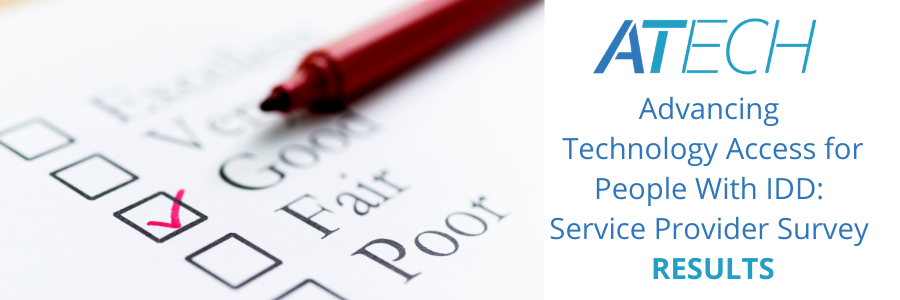The American Network of Community Options and Resources (ANCOR) and the Coleman Institute for Cognitive Disabilities at the University of Colorado have released the results of a national survey of IDD service providers, focusing on the challenges and opportunities of technology access and solutions. The study surveyed 180 service providers, investigating inequities and barriers to technology access as well as innovative ways technology is used to deliver high-quality supports to the IDD community.
The survey was designed to examine three main questions facing people with IDD and their families: understanding the resources needed for the acquisition and sustainability of technology solutions, examining investments in technology solutions, and understanding the impact of the COVID-19 pandemic on technology use.
Recognizing Barriers
When it comes to the barriers to technology, the results of this new report are in line with previous years: the two main impediments remain financial resources and technical expertise with the accessible technology solutions. Ninety three percent of agencies surveyed listed the Medicaid Home and Community-Based Services Waivers (HCBS) as the primary means used to purchase technology solutions. The most prevalent technology purchased with the HCBS waivers were Durable Medical Equipment, Assistive Technology, and Adaptive Aids and Equipment/ Environmental Accessibility Adaptations (EAA).
In addition, the report found that nearly all the surveyed providers use grants, fundraising campaigns, and private donations to purchase technology. In research conducted by Pew Research Center, 85% of Americans report owning a smartphone, whereas people with IDD remain restricted to technology access by funding shortfalls, outdated policies, and limited opportunity. Furthermore, the report found a correlation between technology use and the methods of funding available to purchase new technologies.
Understanding Opportunities
On the positive side, the report shows that of the agencies surveyed, 56% use remote supports for promoting independence, supporting integrated employment and healthcare. The use of assistive technology has become a “gateway” for many agencies, allowing them to build creative rate structures, broker better broadband access, and increase training opportunities. Remote monitoring supports including communication systems, motion sensing systems, radio frequency identification, live audio and video feeds, and online monitoring systems also ease the burden for in-person staffing and allow agencies to provide high quality care during the pandemic.
Additional questions researched by the team included digital literacy, training and funding necessary for using technology solutions, and understanding the changing role of direct care providers and staff with the increased use of technology solutions. The impact of COVID-19 on those with IDD and their families was also reviewed, especially in light of the increased isolation necessitated by the initial nation-wide shut down, as well as the prolonged period of restrictions mandated by many states and communities for safety.
The report also provides insights on accessing technology, as well as thoughts for service providers in the COVID-19 era of delivering care. To access the full report, ANCOR and the University of Michigan have made the full PDF available for free download.
If you’d like information on how assistive technology can help your agency, please contact us!
For more timely articles on Assistive Technology, visit our News & Events page.

